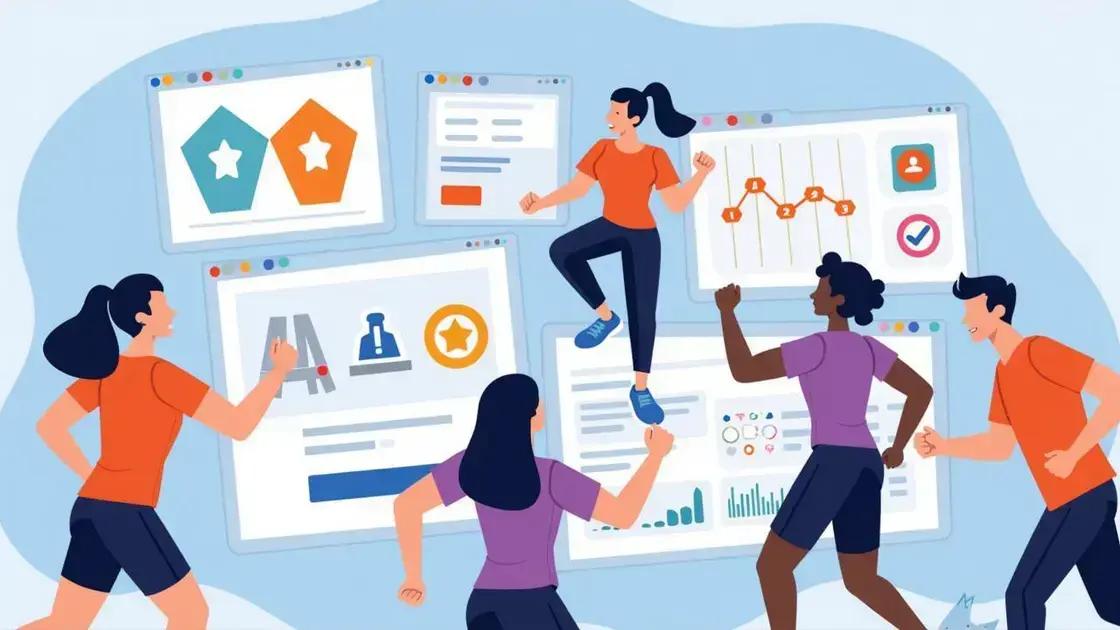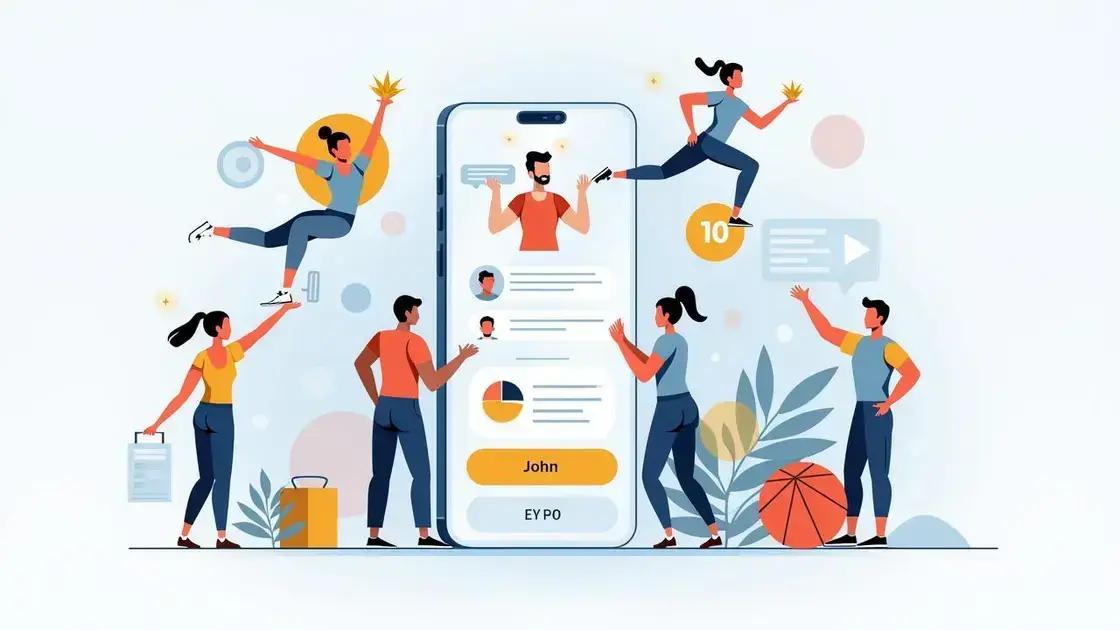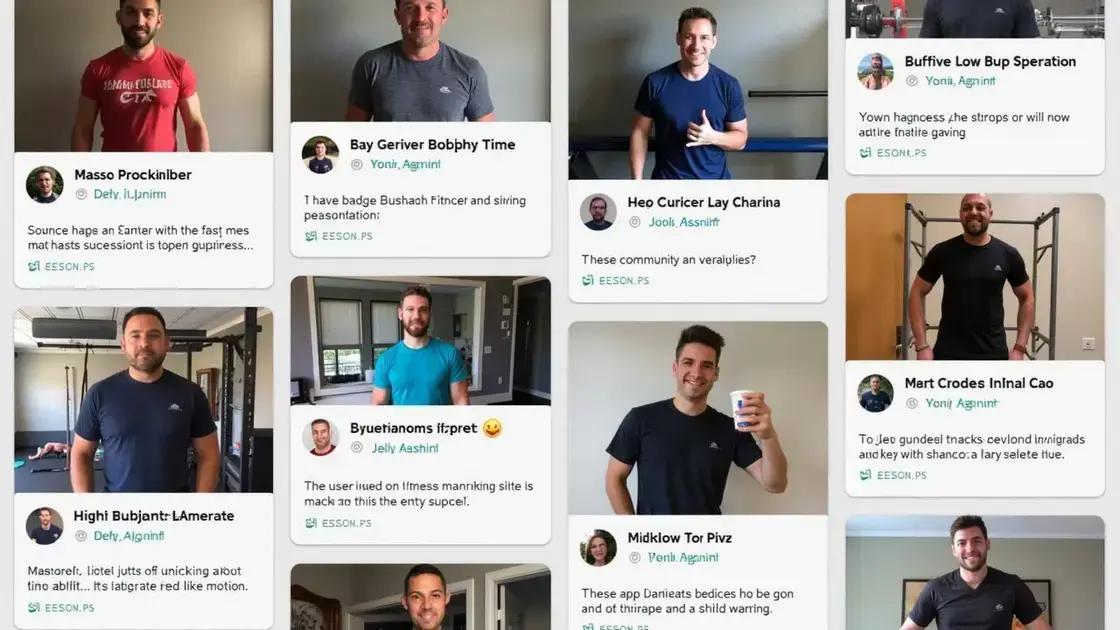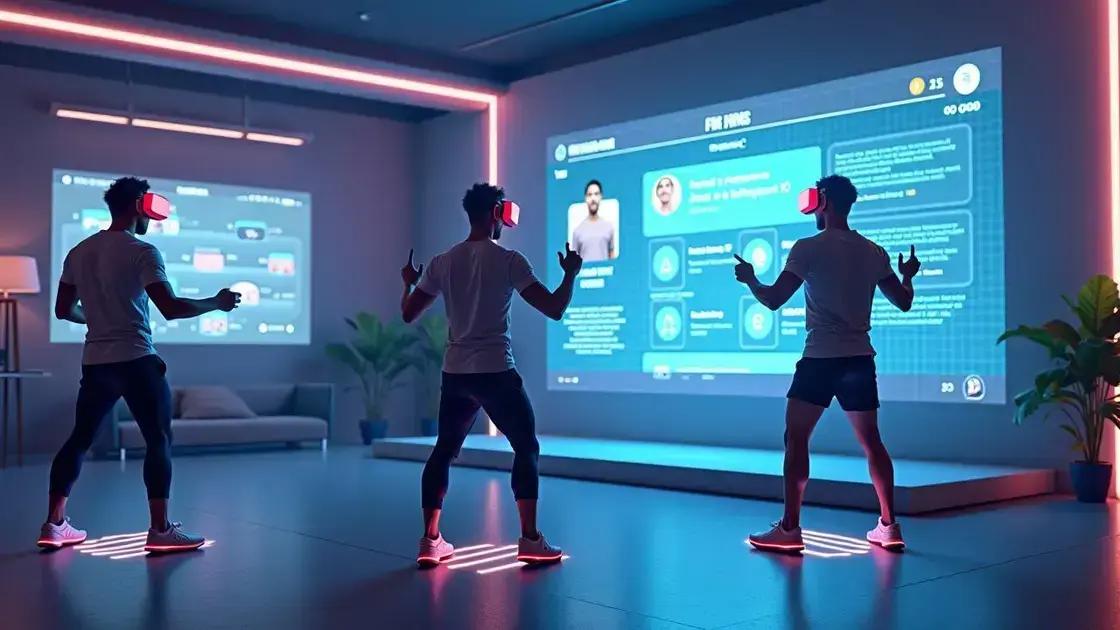Gamified challenges in men’s fitness apps are increasing user engagement by incorporating game-like elements such as points, badges, and leaderboards, encouraging friendly competition, community involvement, and personalized experiences that motivate users to achieve their fitness goals.
In recent years, gamified challenges have emerged as a powerful tool in men’s fitness apps. These interactive elements not only motivate users to achieve their fitness goals, but they also create a sense of community and friendly competition. By integrating challenges that are fun and rewarding, fitness apps have seen a significant increase in user engagement and retention. This article explores how gamified challenges are defined, their importance in engagement, and future directions for fitness applications.
Understanding Gamification in Fitness Apps

Gamification in fitness apps is the process of integrating game-like elements into non-game contexts to enhance user engagement. By incorporating aspects such as points, badges, and leaderboards, developers create a more interactive and motivating experience for users. These elements tap into the competitive nature of individuals, encouraging them to participate actively in their fitness journey.
Key Elements of Gamification
Common components of gamification in fitness apps include:
- Points: Users earn points for completing workouts, reaching goals, or participating in challenges. This immediate feedback keeps users motivated.
- Badges: Badges represent achievements and milestones. Earning badges for completing specific tasks can increase a user’s sense of accomplishment.
- Leaderboards: Displaying users’ rankings relative to others adds a competitive element. Friendly competition can motivate users to push themselves further.
- Challenges: Engaging users through challenges encourages them to reach their fitness goals while fostering camaraderie with others in the app.
Benefits of Gamification
Gamification has several advantages when it comes to fitness app engagement. It can improve user motivation by turning workouts into fun and rewarding experiences. Additionally, gamified elements can help build a supportive community where users encourage each other to achieve their goals. The social aspect often leads to higher retention as users feel more connected.
Examples of Gamified Fitness Apps
Many fitness apps have successfully implemented gamification strategies. Apps like Fitbit[https://www.fitbit.com] offer users the ability to earn badges and compete with friends. Meanwhile, Strava[https://www.strava.com] uses leaderboards and segments to promote competition among cyclists and runners, enhancing overall engagement.
The Role of Challenges in Engagement

Challenges play a critical role in enhancing user engagement within fitness apps. They motivate users to take part in various activities while creating a sense of accountability. By setting up specific targets, users are encouraged to push their limits. This element of challenge not only increases participation but also helps users track their progress toward personal goals.
Types of Challenges
There are various types of challenges that can be found in fitness apps:
- Daily Challenges: These are quick tasks users complete each day, such as walking a certain number of steps or finishing a specific workout routine.
- Weekly Challenges: These require a bit more commitment and often encourage users to log workouts or activities over the course of a week.
- Social Challenges: Users can create teams or groups where members compete against each other for prizes or recognition, fostering community and camaraderie.
- Seasonal Challenges: Often linked to specific events like New Year’s or summer fitness, these challenges encourage users to set and achieve fitness goals during motivational periods.
Why Challenges Matter
Challenges create excitement by adding an extra layer of fun to workouts. They encourage friendly competition, which can be motivating. When users see how they rank among their peers, it sparks a desire to improve and stay active. This sense of competition can lead to a greater commitment to fitness goals.
The Impact of Challenges on Retention
Engaging users through challenges not only boosts participation but also helps with retention. When users are consistently presented with new challenges, they are more likely to stay active in the app. Regular engagement with challenges keeps the app experience fresh and enjoyable, which is essential for long-term commitment to fitness routines.
Success Stories from Men’s Fitness Apps

Many men’s fitness apps have shared inspiring success stories that highlight the power of gamified challenges. These stories showcase how users have transformed their fitness journeys, leading to improved health and well-being. One standout example is the app MyFitnessPal where users compete in daily and weekly challenges. Users have reported significant weight loss, increased muscle mass, and enhanced endurance by sticking to these challenges.
Case Study: Fitbod
Fitbod, a workout planning app, features personalized challenges that adapt to users’ strength and fitness levels. Users have shared success stories of achieving personal records and gaining confidence in their abilities. Many have found newfound motivation through the community aspect of sharing their progress online.
Case Study: Strava
Strava has a strong community of cyclists and runners that thrive on friendly competition. One user logged a stunning 1,000 miles through motivational challenges available on the app. His story of dedication inspired others to push their limits and participate in similar challenges.
Case Study: Runtastic
Runtastic has implemented various challenges that users can join based on their fitness goals. Many users report feeling motivated to achieve their objectives because of these engaging challenges. Some members have completed marathons and triathlons after participating in Runtastic challenges, showing how app features can lead to impressive personal achievements.
These success stories from men’s fitness apps highlight the effectiveness of gamified challenges. Users are not only meeting their fitness goals but are also boosting their mental resilience through consistent engagement and camaraderie.
Future Trends in Gamified Fitness

The future of gamified fitness is bright, with emerging trends that promise to enhance user engagement further. As technology advances, fitness apps are expected to integrate even more sophisticated features to keep users motivated and entertained.
Virtual and Augmented Reality
One significant trend is the rise of virtual reality (VR) and augmented reality (AR)
Another trend is the move toward personalized challenges. Fitness apps will use data analytics and AI to create tailored experiences based on individual fitness levels and preferences. Users will face challenges that suit their unique goals, making workouts more relevant and engaging. Wearable technology is likely to become more integrated with fitness apps. Trackers and smartwatches will provide real-time feedback during challenges, enhancing motivation. This integration may also allow users to compete with real-time stats that show how they measure up against friends or even the global community. Social features are expected to expand, fostering a stronger sense of community among users. Features like group challenges and in-app social networks will allow users to connect, support each other, and participate collaboratively in fitness goals. The camaraderie will contribute to higher engagement and retention rates. These trends indicate that gamified fitness apps will continue to evolve, making the fitness journey more enjoyable and interactive for men and fitness enthusiasts everywhere. As we have explored, gamified challenges are significantly boosting engagement in men’s fitness apps. From understanding gamification to seeing successful stories, it’s clear that these apps are transforming how users approach their fitness journeys. The integration of advanced technologies like VR and AR, personalized challenges, and social features are paving the way for a more engaging and interactive experience. Users can look forward to a future where fitness feels less like a chore and more like an exciting game. As the fitness landscape continues to evolve, both developers and users should embrace these changes. By doing so, we can unlock new levels of motivation, community support, and ultimately, better health outcomes. Gamified challenges are activities within fitness apps that incorporate game-like elements, such as points, badges, and leaderboards, to enhance user engagement. Challenges motivate users to participate actively by setting specific goals, encouraging competition, and fostering a sense of community among app users. Yes, apps like MyFitnessPal, Strava, and Fitbod have successfully implemented gamified challenges, resulting in inspiring user success stories. Future trends include virtual and augmented reality experiences, personalized challenges based on user data, and enhanced social features for community engagement. Social challenges allow users to connect and compete with friends or others, fostering motivation and accountability as they pursue fitness goals together. Yes, gamification can lead to increased user satisfaction and retention by making workouts more enjoyable and maintaining motivation through ongoing challenges.Personalized Challenges
Integration with Wearable Technology
Social Features and Community Building
Embracing the Future of Fitness Engagement
FAQ – Frequently Asked Questions about Gamified Challenges in Men’s Fitness Apps
What are gamified challenges?
How do challenges increase engagement in fitness apps?
Are there examples of successful fitness apps using gamified challenges?
What future trends can we expect in gamified fitness?
How do social challenges work in fitness apps?
Is gamification effective for maintaining long-term fitness habits?












